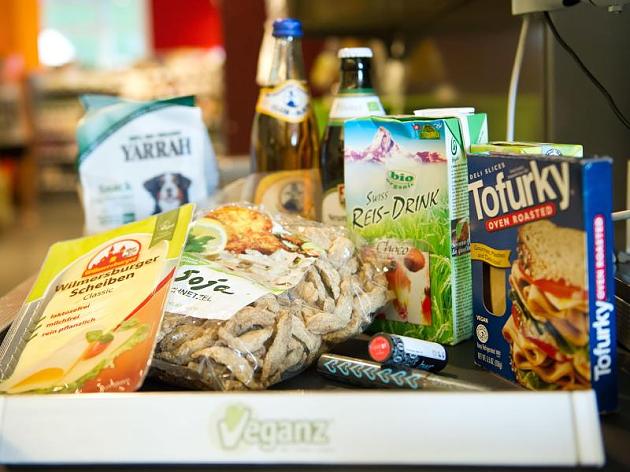Vegan nutrition is often equated with healthy and ecologically correct. This is a big misunderstanding when it comes to meat substitutes made from soy or wheat protein. Only a lot of salt, fat and additives create flavor on the plate.
- Soy or wheat protein taste like nothing, especially not like meat.
- Abundant food chemistry turns plants into meat substitutes.
- Vegan ready meals are no healthier than conventional products.
Guess what that is: soy protein, paprika, onions, sunflower oil, drinking water, wheat protein, chicken protein powder, wheat flour, wheat starch, table salt, spices, yeast, maltodextrin, herbs, thickener: (guar gum), smoke flavor?
These 16 ingredients make vegetarian mini meatballs from Lidl’s “My best Veggie” series. It’s a casual yet typical example of meat dishes without meat. A lot of food chemistry is required before soy becomes a meatball or seitan becomes a currywurst. Taste, texture and appearance are only created through skillful handling of additives and aromas from the laboratory.
Vegan ready meals are too salty and too greasy
Too many additives, including too much salt, sugar and fat in meat substitutes, criticized the Hamburg Consumer Center two years ago in the “Market Check: Vegan Food” . Nothing has changed since then. The criticism also applies to the 2.5 grams of salt and 13.3 grams of fat per 100 grams of meatball in our example.
Vegetarian and vegan ready meals, sausage and cheese preparations are no more unhealthy than the originals – but neither are they healthier or better in quality. But this is what many consumers expect, as the NDR’s consumer magazine “Markt” recently showed in a road test:
Consumers have false expectations of “vegan”
Quite a number of respondents were in favor of vegetarian products because they considered them healthy and low in calories. When they were referred to the list of ingredients, they reacted surprised and slightly shocked.
- The vegetarian currywurst tested had 100 kilocalories more than the original made from meat from the same manufacturer.
- 100 grams of meatless salami contained 3.3 grams of salt. This is more than half of the daily dose of six grams recommended by the German Nutrition Society.
- Some examples of sausages contained not only rapeseed oil, which is considered healthy, but also cheap palm fat. Because of its saturated fatty acids, it is one of the fats that are harmful to health.
- Overall, thickeners, stabilizers, colors and preservatives are on the long lists of ingredients in meat substitutes – all additives that nutrition experts are a thorn in the side of even conventional foods.
Ready meals with meat substitutes or sausage imitations no longer have anything to do with the healthy wholefood diet of traditional vegetarians. If you want to eat valuable food without meat, you should rely on fresh food and creative preparation – the best advice for healthy eating has always been.






